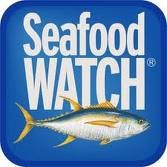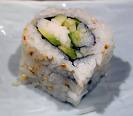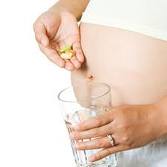
If you've been following the blog over the last week, I've been reporting about interesting products and things I learned at the 2011 Natural Products West Expo. It's a huge exposition where food companies hoping to connect with buyers for health food stores have a chance to showcase their products. There were about 2,000 exhibitors there, and in 3 days I didn't get a chance to see and talk to everyone I wanted to. You can imagine, on the exhibitor end, the pressure there is to create a product, packaging concept, and booth display that catches the eye of the people you came to meet!
Unfortunately, not all concepts were on target. I'm sharing one that is a common example of how omega-3 marketing is not always accurate. It's still not regulated well, so there are lots of variations in how facts are presented that can be confusing to the person who knows they want to eat well but doesn't understand all the facts.
Yesterday I pulled a fish oil bottle out of my sample bag and noticed on the label that it was"extra-virgin" fish oil. This is a concept that I'm familiar with when it refers to olive oil, and it means that it is the olive oil from the first press of olives. It's a stronger oil, with a lower smoke point, and more appropriate for recipes where the oil is not heated. But it's not really a concept that has any relevance to fish. (I joked with my Facebook friends about whether or not it really mattered what the fish were doing before we caught them!) This particular product's label was also busy with breakdowns of omega-3's, 5's, 6's, 7's, and 9's, promoting a"perfect complement of 16 omega's". It all sounded very official, but to the average consumer who is still confused about 3's, 6's, and 9's, it only serves to make shopping for fish oil tedious and painful.
One of the reasons for all of this confusion is that fish oil is Mother Nature's patent. Consumers want their foods and supplements to be as unrefined as possible, but the only way to patent and protect a manufactured product, is to alter it. So it is very difficult for fish oil companies to create products that distinguish themselves from other competing products while keeping their customers happy. What is left to distinguish a product is where the fish is caught, what species the fish is, and the total amounts of omega-3 fatty acids. And lots of pretty, irrelevant marketing words.
Even with all my knowledge and training, I can spend hours in the health food store looking at labels on fish oil supplements and keeping up with new and different products. From my perspective, it's the total amount of omega-3's that matters. If you have a hard time with the flavor or the burps, there are several flavored options and packaged forms that can get you around that problem.
Here is my advice to you.
1. First of all, before you spend a lot of money and time, try taking fish oil to see if it works for the problem you're trying to solve. Be sure you take enough of it. For the degree of inflammation seen with PCOS, you're going to need to take the equivalent of 1000 mg DHA. That can be 2 to 3 times the recommended dose on the bottle. Be sure you do your math. It can even be the Costco brand. That is actually my first recommendation to clients. I'm more interested in whether or not adding DHA to the diet is helpful, not where the fish was caught, what the flavor of the fish oil is, yadayadayada. I just want to establish if there is a DHA deficiency.
2. Make a list of the problems that you have that you're looking for relief with that you know are related to omega-3 imbalance: memory, concentration, mood swings, carbohydrate cravings, skin problems, menstrual irregularity. Keep this list in a handy place.
3. If memory problems are on your list, be sure you have a mechanism for remembering to take the fish oil! I swear, this is one of the biggest barriers to PCOS, memory and forgetfulness keeping you from remembering what it is you need to do! If you need to engage your significant other, or set up an alarm on your phone, or a Google calendar reminder…do whatever it takes to be consistent. If you didn't take it, and it didn't work, it didn't work because you didn't take it, not because it's not the issue.
4. Be diligent about reducing your omega-6 intake: soy, safflower, sunflower, sesame, corn, cottonseed. The less of these oils you have in your diet, the better chance omega-3's have of doing the job.
5. Be sure you're reading the dose right on the label. One of my biggest issues I have with one of the most popular brands of fish oil is that their dose is two capsules, not one. Most people never read the fine print, assume a dose is one pill, and end up taking half of what they were thinking they were taking.
6. At the end of your trial period, look at your list and see what improved. Did it work? NOW, and only NOW that you've established whether or not you were DHA deficient, consider if the type of fish oil you take. Would you prefer a flavored, a gel, a capsule, a liquid? All of them are going to give you what you want, you're just deciding which one fits best with your personal taste and texture preference.
Pretty packaging and fancy words are not what are going to help you to feel better. It's what's inside the package, and in what concentration, that you need to focus on!
















